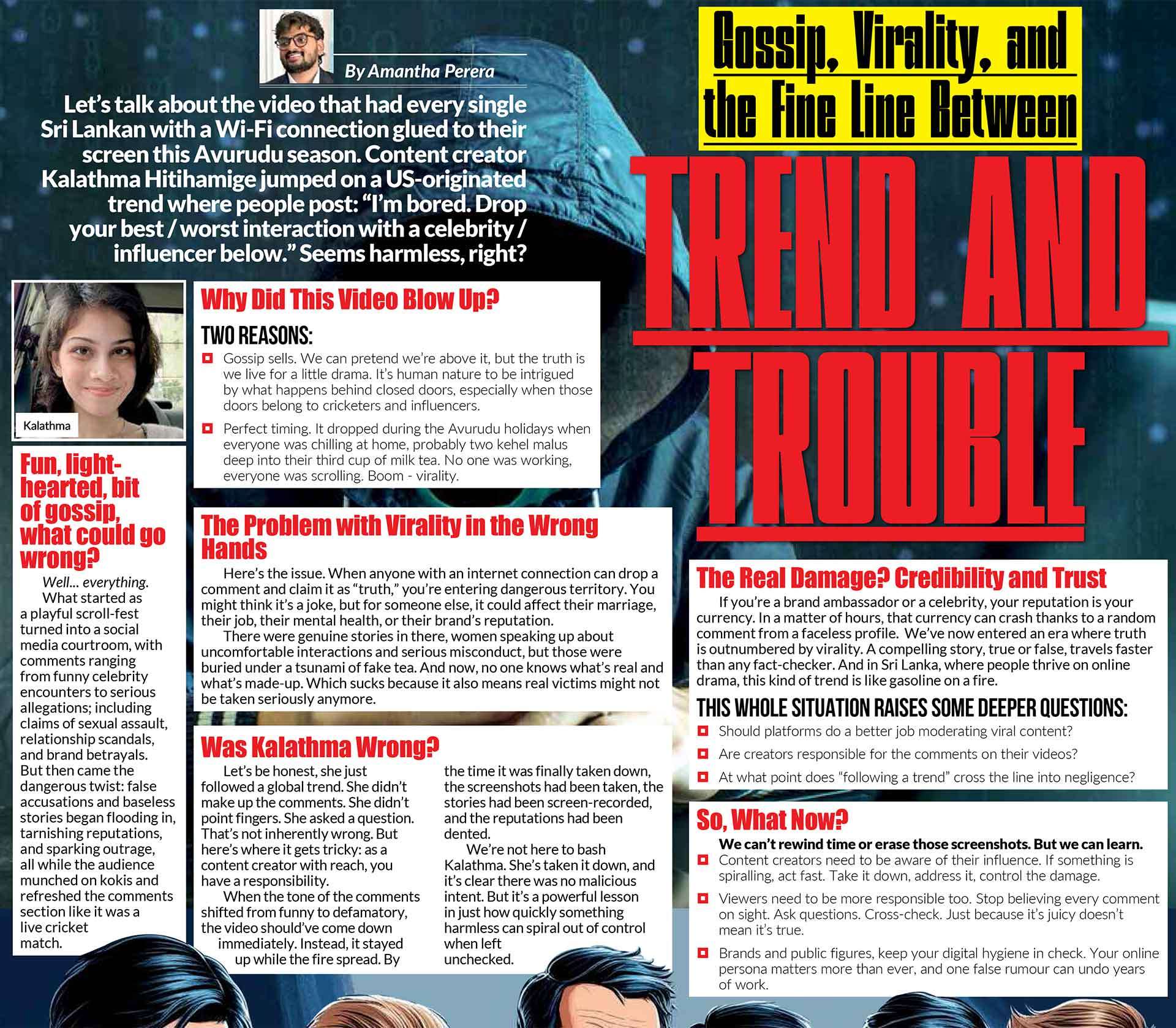

By: Rishini Weeraratne
The landscape of dating has evolved significantly with the rise of Generation Z, bringing forth a unique lexicon that encapsulates their experiences and perspectives on relationships. Understanding these terms offers insight into modern dating dynamics and the challenges that accompany them.
1. Breadcrumbing
This term refers to the act of sending intermittent, non-committal messages, breadcrumbs, to keep someone interested without pursuing a meaningful relationship. It’s a way to maintain someone’s attention without genuine intent, leading the recipient on without offering substantial commitment.
2. Orbiting
After ending communication, an individual continues to engage with your social media content, liking posts or viewing stories, without direct interaction. This behaviour keeps them in your ‘orbit,’ creating confusion about their intentions and hindering emotional closure.
3. Throning
Dating someone primarily to elevate one’s social status or public image, rather than for genuine affection. The partner is viewed as a ‘throne’ that enhances the dater’s prestige, reducing the authenticity of the relationship.
4. Wokefishing
This involves pretending to hold progressive, socially conscious beliefs to attract partners who value such principles. It’s a deceptive tactic where individuals misrepresent their values to appeal to others, leading to potential conflicts when true beliefs surface.
5. Pocketing
Keeping a partner separate from one’s social circles and avoiding introducing them to friends or family. This ‘pocketing’ behaviour can signal reluctance to fully commit or acknowledge the relationship publicly, causing insecurity and doubt.
6. Caspering
A gentler form of ghosting, where one slowly reduces communication, offering sporadic responses before eventually cutting ties. Named after the friendly ghost, it attempts to soften the blow of ending a connection but can still leave the other person confused.
7. Revenanting
When someone who previously ghosted you reappears unexpectedly, attempting to rekindle the relationship without acknowledging their prior disappearance. This behaviour can be unsettling, as it disregards past actions and the hurt, they caused.
8. Collabor-dating
Combining dating with collaborative activities, such as creating content together for social media platforms. This approach blends personal and creative endeavours, reflecting the digital integration in modern relationships.
9. Freak Matching
Connecting with someone based on shared unconventional or niche interests. This term celebrates finding compatibility through unique passions that might be considered ‘freaky’ by mainstream standards.
10. Shadow Phasing
Subtly introducing a new partner on social media without making a formal announcement. This includes posting ambiguous photos or hints, allowing for a gradual reveal of the relationship to one’s audience.
11. Flex Dating
Engaging in spontaneous, casual meetups that fit conveniently into one’s schedule, such as running errands together or quick coffee dates. This flexible approach to dating accommodates busy lifestyles without the pressure of traditional, formal dates.
12. Beige Flags
Refers to traits in a partner that are neither positive nor negative but could indicate potential compatibility issues. These ‘beige flags’ might be quirks or habits that aren’t deal-breakers but warrant attention as the relationship progresses.
13. Sledging
Maintaining a relationship out of convenience during certain periods, such as the holiday season, and ending it when it’s no longer advantageous. This pragmatic approach prioritizes personal comfort over genuine connection.
14. Ghosting
Suddenly ceasing all communication with someone you’re dating without explanation. This abrupt silence leaves the other person uncertain and hurt, lacking closure.
15. Gaslighting
Manipulating someone into doubting their own perceptions or sanity. In dating, this can involve denying past events or feelings, causing the partner to question their reality.
16. Love Bombing
Overwhelming someone with excessive affection and attention early in a relationship to gain control or influence. This intense behaviour can be misleading and manipulative, often followed by withdrawal.
17. Cushioning
Keeping potential romantic interests on standby while already in a relationship, serving as a ‘cushion’ in case the current relationship ends. This strategy reflects insecurity and a lack of commitment.
18. Benching
Putting someone on the ‘bench’ by maintaining minimal contact without pursuing a full relationship, keeping them as an option without commitment. This leads to ambiguity and prevents the person from moving on.
19. Stashing
Hiding a partner from one’s personal life, such as not introducing them to friends or family, to keep options open or avoid commitment. This behaviour can make the hidden partner feel undervalued.
20. Situationship
A situationship is a romantic or intimate relationship that lacks clear definitions or commitment. It exists somewhere between casual dating and a serious relationship, often without labels. While both parties may enjoy each other’s company, the ambiguity can lead to confusion or mismatched expectations. Situationships are common in modern dating, where people may prioritize flexibility over traditional relationship structures.
These terms reflect the complexities and nuances of modern dating, highlighting behaviours and patterns that have emerged with technological advancements and changing social norms. Recognizing and understanding this terminology can facilitate better communication and awareness in navigating contemporary relationships.










